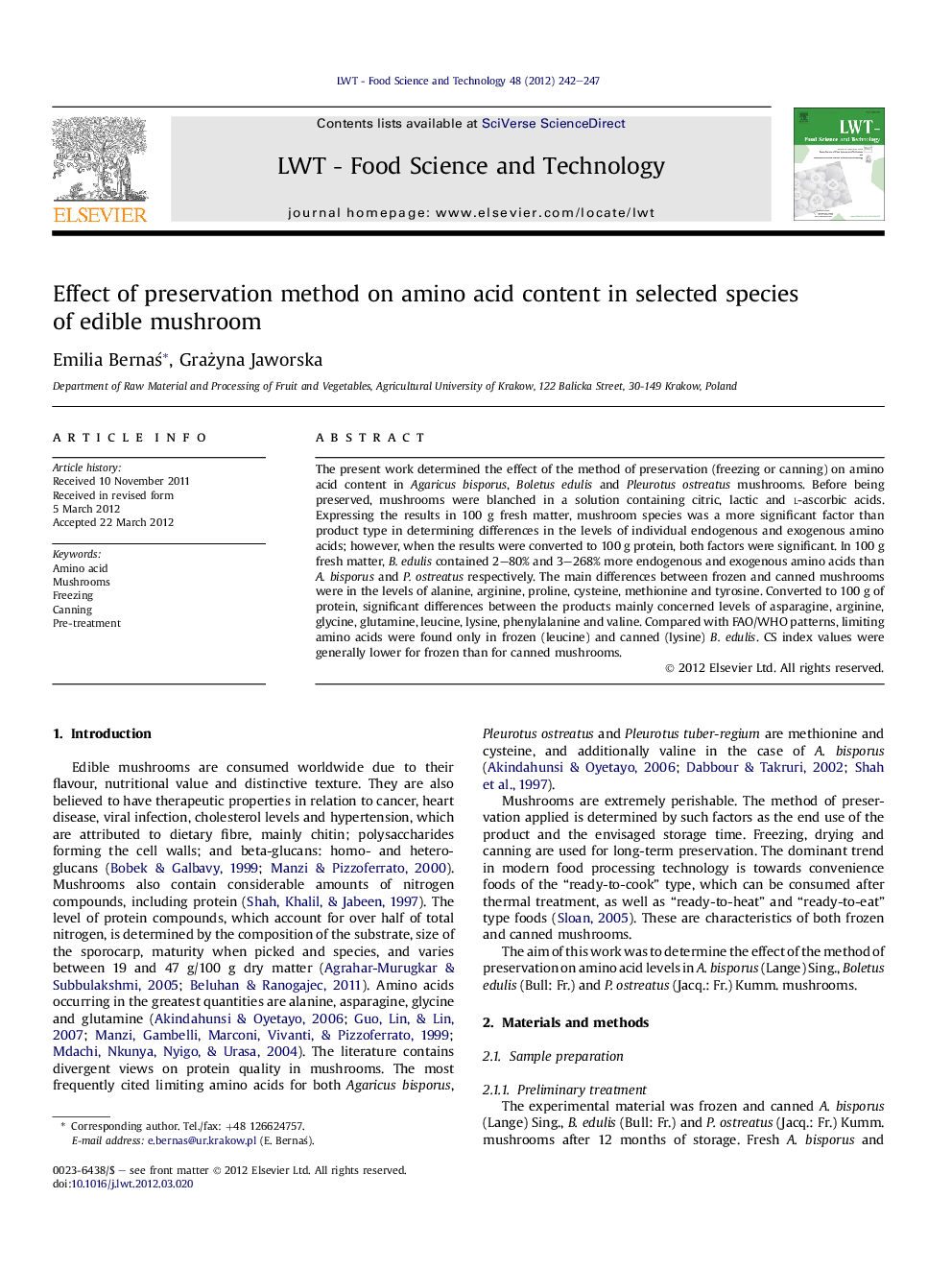| Article ID | Journal | Published Year | Pages | File Type |
|---|---|---|---|---|
| 6405280 | LWT - Food Science and Technology | 2012 | 6 Pages |
The present work determined the effect of the method of preservation (freezing or canning) on amino acid content in Agaricus bisporus, Boletus edulis and Pleurotus ostreatus mushrooms. Before being preserved, mushrooms were blanched in a solution containing citric, lactic and l-ascorbic acids. Expressing the results in 100 g fresh matter, mushroom species was a more significant factor than product type in determining differences in the levels of individual endogenous and exogenous amino acids; however, when the results were converted to 100 g protein, both factors were significant. In 100 g fresh matter, B. edulis contained 2-80% and 3-268% more endogenous and exogenous amino acids than A. bisporus and P. ostreatus respectively. The main differences between frozen and canned mushrooms were in the levels of alanine, arginine, proline, cysteine, methionine and tyrosine. Converted to 100 g of protein, significant differences between the products mainly concerned levels of asparagine, arginine, glycine, glutamine, leucine, lysine, phenylalanine and valine. Compared with FAO/WHO patterns, limiting amino acids were found only in frozen (leucine) and canned (lysine) B. edulis. CS index values were generally lower for frozen than for canned mushrooms.
⺠Effect of freezing and canning on amino acid content in edible mushrooms. ⺠B. edulis contained more amino acids than A. bisporus and P. ostreatus. ⺠Mushrooms product differed in alanine, arginine, proline, cysteine, methionine and tyrosine. ⺠Limiting amino acids were found in frozen (leucine) and canned (lysine) B. edulis. ⺠CS index values were generally lower for frozen than for canned mushrooms.
